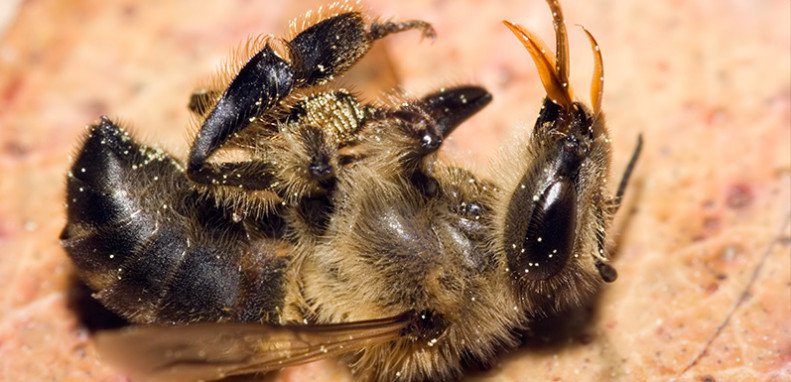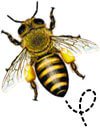Bees Attracted to Dangerous Fungicides

Most people have heard that honey bee populations are struggling–and the affects that neonicotinoid pesticides are having on honey bee health are gradually becoming main-stream knowledge. Interestingly, what is coming to light as more research is done, fungicides may also have an adverse effect on honey bee health as well.
We need bees. With 80% of food crops relying on honey bees for pollination, it has been found that one of every three bites of food we eat is pollinated by bees. Declines in honey bee populations have caused global concern for the world’s food supply and the uncertain future that would bring.
This excerpt from an article in Science Daily details the findings of honey bees and fungicides.
When given the choice, honey bee foragers prefer to collect sugar syrup laced with the fungicide chlorothalonil over sugar syrup alone, researchers report in the journal Scientific Reports.
The puzzling finding comes on the heels of other studies linking fungicides to declines in honey bee and wild bee populations. One recent study, for example, found parallels between the use of chlorothalonil and the presence of Nosema bombi, a fungal parasite, in bumble bees. Greater chlorothalonil use also was linked to range contractions in four declining bumble bee species.

To test whether foraging honey bees showed a preference for other chemicals they are likely to encounter in the wild, researchers set up two feeding stations in a large enclosure. Foraging honey bees could fly freely from one feeder to the other, choosing to collect either sugar syrup laced with a test chemical or sugar syrup mixed with a solvent as the control. Over the course of the study, they tested honey bee responses to nine naturally occurring chemicals, three fungicides and two herbicides at various concentrations.
The trials revealed that honey bees prefer the naturally occurring chemical quercetin over controls at all concentrations tested.
To the researchers’ surprise, the bees also preferred sugar syrup laced with glyphosate — the active ingredient in Monsanto’s Roundup herbicide — at 10 parts per billion, but not at higher concentrations.
“The bees are not only not avoiding this fungicide, they’re consuming more of it at certain concentrations,” Berenbaum, the team’s research leader, said.
Fungicides are among the most prevalent contaminants of honey bee hives, and it is likely the bees themselves are bringing these pesticides into the colony through their food-collecting activities. While perplexing, bees’ preferences for some potentially toxic chemicals may be the result of their distinct evolutionary history, Berenbaum said.
The new findings are worrisome in light of research showing that exposure to fungicides interferes with honey bees’ ability to metabolize medications used by beekeepers to kill the parasitic varroa mites that infest their hives.
To read this article in its entirety, please visit: Agricultural fungicide attracts honey bees.




